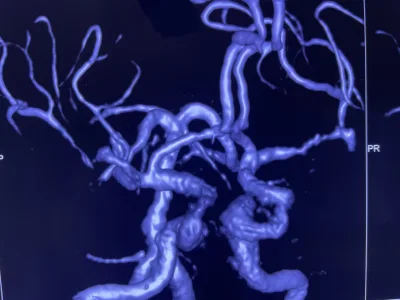49 THỬ NGHIỆM LÂM SÀNG KHẲNG ĐỊNH: ACID FOLIC LÀM GIẢM HUYẾT ÁP, BỆNH TIM MẠCH VÀ HOMOCYSTEIN MÁU
PHÂN TÍCH GỘP NGHIÊN CỨU VAI TRÒ CỦA ACID FOLIC TRONG GIẢM HUYẾT ÁP VÀ HOMOCYSTEIN MÁU
Trích dẫn của website: http://homobq.com/49-thu-nghiem-lam-sang-khang-dinh-acid-folic-lam-giam-huyet-ap-va-homocystein-mau/
Tiến sỹ Bác sỹ Nguyễn Văn Tuấn, người đã tìm hiểu và dịch lược từ nghiên cứu quốc tế công bố năm 2017 trên tạp chí Pharmacol
https://www.ncbi.nlm.nih.gov/pmc/articles/PMC5584015/
Axit folic thường được sử dụng để làm giảm nồng độ homocystein, ngăn ngừa đột quỵ và bệnh tim mạch (CVD) hiện nay. Tuy nhiên, hiệu quả của các liệu pháp làm giảm nồng độ homocystein trong việc giảm nguy cơ CVD và đột quỵ vẫn còn gây tranh cãi.
Mục tiêu của chúng tôi là phân tích tổng hợp các thử nghiệm ngẫu nhiên có đối chứng (RCTs) có liên quan để đánh giá hiệu quả của việc bổ sung axit folic ở những bệnh nhân tăng huyết áp và Hyperhomocysteinemia (HT / HHcy).
Phương pháp: Chúng tôi tổng hợp các thử nghiệm lâm sàng đánh giá tác dụng của axit folic kết hợp với liệu pháp hạ áp so với chỉ dùng hạ huyết áp. Sự khác biệt trung bình (WMD) và nguy cơ tương đối (RR) được sử dụng làm thước đo tác dụng của axit folic đối với các kết quả đo lường với một mô hình nghiên cứu ngẫu nhiên. CÓ 65 nghiên cứu bao gồm 7887 bệnh nhân đáp ứng tất cả các tiêu chuẩn thu nhận. Trong số đó, 49 thử nghiệm đã báo cáo hiệu quả điều trị kết hợp để làm giảm huyết áp tâm thu và huyết áp tâm trương so với hạ huyết áp đơn thuần (WMD = −7.85, WMD = −6.77). Trong khi đó, việc bổ sung axit folic dường như làm giảm mức độ tổng homocystein (WMD = 5.5). Ngoài ra, việc bổ sung axit folic rõ ràng làm giảm nguy cơ mắc các biến cố tim mạch và mạch máu não (CVCE) 12,9% so với nhóm chứng. Xét về phân tích phân tầng, hiệu quả có lợi lớn hơn được thấy trong các RCT đó với thời gian điều trị hơn 12 tuần, với sự tăng nồng độ acid folic giúp giảm nồng độ homocysteine tổng cộng hơn 25%.
Kết luận: Phát hiện của chúng tôi chỉ ra rằng việc bổ sung axit folic có hiệu quả trong công tác phòng chống nguyên phát các biến cố tim mạch và mạch máu não trong số các bệnh nhân nồng độ homocystein áu cao, cũng như làm giảm huyết áp và giảm tổng mức homocystein máu.
A Meta-Analysis of Folic Acid in Combination with Anti-Hypertension Drugs in Patients with Hypertension and Hyperhomocysteinemia
Abstract
Folic acid is generally used to lower homocysteine concentrations and prevent stroke and cardiovascular disease (CVD) at present. However, the efficacy of therapies that lower homocysteine concentrations in reducing the risk of CVD and stroke remains controversial. Our objective was to do a meta-analysis of relevant randomized controlled trials (RCTs) to evaluate the efficacy of folic acid supplementation among patients with hypertension and Hyperhomocysteinemia (HT/HHcy). We included RCTs examining the effects of folic acid plus antihypertensive therapy compared to antihypertensive alone. Weighted Mean Difference (WMD) and Relative risk (RR) were used as a measure of the effect of folic acid on the outcome measures with a random effect model. Sixty-five studies including 7887 patients met all inclusion criteria. Among them, 49 trials reported significant effect of combination therapy for reducing SBP (systolic Blood Pressure) and DBP (Diastolic Blood Pressure) levels compared with antihypertensive alone (WMD = −7.85, WMD = −6.77, respectively). Meanwhile, folic acid supplementation apparently reduced the level of total homocysteine (WMD = 5.5). In addition, folic acid supplementation obviously reduced the risk of cardiovascular and cerebrovascular events (CVCE) by 12.9% compared with control groups. In terms of the stratified analyses, a bigger beneficial effect was seen in those RCTs with treatment duration of more than 12 weeks, a decrease in the concentration of total homocysteine of more than 25%, with folic acid fortification. Our findings indicated that folic acid supplementation was effective in the primary prevention of CVCE among HT/HHcy patients, as well as reducing the blood pressure and total homocysteine levels.
Introduction
Prospective previous researches had confirmed a solid, graded, and independent positive association between blood pressure and risk of stroke and cardiovascular disease (CVD) (Chobanian et al., 2003). The latest epidemiological data showed that hypertension is the biggest single contributor to the global burden of disease, leading to approximately nine million deaths each year (Lim et al., 2012), which was largely mediated through CVD and stroke (Poulter et al., 2015). Furthermore, the numbers of subjects suffered from hypertension and the morbidity of high blood pressure worldwide were predicted to increase over the next decade (Kearney et al., 2005). What is more, hyperhomocysteinemia has also emerged as an independent risk factor for CVD and stroke. A recent meta-analysis showed that folic acid supplementation to lower total homocysteine (tHcy) concentrations could effectively reduce the risk of stroke in primary prevention (Wang et al., 2007). Meanwhile, it was interesting to note that several carefully conducted studies to date have showed hyperhomocysteinemia often accompany with hypertension in many experimental models, as well as in patients with primary hypertension, especially systolic blood pressure (SBP) (Lim and Cassano, 2002; Huo et al.,2015). In addition, some randomized, placebo-controlled trials (RCTs) of tHcy-lowering therapy had shown that such intervention was associated with a decrease in blood pressure (Mangoni et al., 2002). However, although Hyperhomocysteinemia associated hypertension patients (HT/HHcy) are common in clinic, the precise mechanism by which tHcy results in vascular dysfunction and contributes to hypertension are largely unknown (Sen et al., 2010). To date, several mechanisms have been proposed. Hyperhomocysteinemia related changes in vascular biology such as increased arterial stiffness, vascular smooth muscle cell proliferation and endothelial dysfunction could easily lead to an increase in blood pressure (Stehouwer and van Guldener, 2003).
The evidence from observational studies suggested that HT/HHcy levels were associated with increased danger of CVD and stroke compared with hypertension alone (Wang et al., 2007). Stanger and colleagues displayed that tHcy lowering may have intrinsic vasoprotective effects principally independent of folic acid supplementation (Stanger et al., 2002). Two meta-analyses reported that folic acid administration may be good for CVD prevention in patients with kidney disease, especially in patients without a history of grain fortification with folic acid, with lower percent baseline diabetes (Jardine et al., 2012; Qin et al., 2013). In addition, folic acid supplementation was effective in stroke prevention in populations with no or partial folic acid fortification (Huo et al., 2012). On the contrary, Zhou et al reported that folic acid did not impact on the incidence of CVD, stroke or all-cause mortality based on the 16 RCTs (Zhou et al.,2011). Taken together, multiple clinical trials had now been performed investigating folic acid administration for the prevention of CVD and stroke outcomes in HT/HHcy patients. However, there were still no meta-analysis concerns on tHcy-lower therapy in HT/HHcy. Our purpose was thus to do a meta-analysis focusing on efficacy of folic acid plus antihypertensive combination therapy among patients with HT/HHcy.














